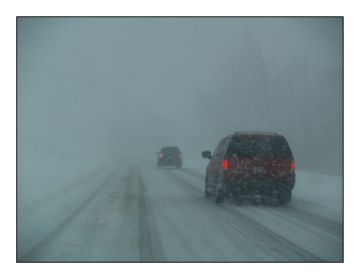Blog
Winter Safe Driving Tips for At-Work Drivers and Their Families
Originally published in Fleet Management Weekly 10/30/2018

By eDriving
Winter weather conditions impact driver safety regardless of the experience level of the driver. The end of Daylight Saving Time (DST) combined with decreasing temperatures leads to heightened crash risk for all drivers. Preparation is key, including looking out for other road users who might not know how to handle their vehicles in bad weather.
Here, eDriving provides safe winter driving tips for fleet, safety and risk managers to distribute to their employees who drive at work AND their families. These winter safety tips will help all drivers prepare for the hazards of winter and return home to their loved ones every day, whatever the weather.
1. Vehicle Maintenance
- Keep your vehicle well maintained/serviced and check you have a good battery. Your battery needs to work harder in the winter (working lights and wipers, for example) and can fail completely with hardly any warning
- Make sure tires have good tread depth and are inflated correctly (including the spare)
- Keep the cooling system full with antifreeze at the correct strength
- Check that windshield wipers and washers are working properly – in cold temperatures use high strength washer fluid
- Test lights before setting out to ensure they’re clean and working
2. Trip Preparation
- Ask yourself if there is an alternative to road travel
- If you must travel, check local and national weather updates before setting out
- Allow extra time for your trip
- Let others know your travel plans and your expected time of arrival
- Keep fuel levels topped off
- Take a charged mobile phone with you but remember you could get into trouble in a “dead area” so carry high visibility clothing, hot drinks, food, boots, a torch and shovel as well – it could be a long walk to a phone if you get stranded because of bad weather
- Ensure vehicle windows, mirrors and lights are clear from mist, frost and snow. Snow and ice reduce what you can see, and can be dangerous to other road users as it falls off your vehicle
3. Safety on the Roads
- Use main roads as much as you can if bad weather is expected
- Drive according to the conditions
- Reduce speed in poor visibility such as during snowfall, fog or heavy rain
- Increase your following distance – three seconds between vehicles is for good conditions only. A wet road surface means you’ll take twice as long to stop, so you need to be at least six seconds behind the vehicle in front of you
- Use low headlights in poor visibility and snow to help others see you
- Use rear fog lights in poor visibility but switch them off when conditions improve
- Watch out for other road users including motorcycles, bicycles, pedestrians and children who may also be experiencing challenges in bad conditions – and who might be more difficult to see when visibility is reduced
4. Specific Weather Conditions
Fog
- Slow down, keep your distance, and turn on your lights
- Drive very slowly using low headlights. Use rear fog lights if visibility is seriously reduced but remember to switch them off when visibility improves
- Don’t hang on the taillights of the vehicle in front – this gives you a false sense of security and means you might be driving too close
- Don’t speed up suddenly – even if it seems to be clearing, you can suddenly find yourself back in thick fog
Ice, Snow and Slush
- Drive slowly, allowing extra room to decelerate and stop
- It can take ten times longer to stop in icy conditions than on a dry road so leave an appropriate following distance
- Drive as smoothly as possible
- If you skid, ease off the accelerator but avoid braking suddenly
Floodwater
- Try to find an alternative to driving through floodwater
- Don’t attempt to drive through floodwater if it’s moving or if you’re unsure of the depth – just 30 centimeters of moving water can float a car
- Avoid the deepest water, which is generally near the curb
- Test your brakes a few times after you are through a flooded area before you drive at normal speed
Low Sun
- Keeping windows clean helps to prevent glare
- Wear sunglasses if needed but remove them when the sun goes in
- Reduce speed and be particularly cautious at intersections – other drivers might be struggling to see too!
5. Emergency Situations
- If you break down or get stuck in bad weather conditions don’t panic!
- Stay where you are and call for help using your mobile phone – use hazard lights to make your vehicle more visible
- If you have no choice to leave your vehicle or if it’s safer to leave your vehicle, put on high visibility clothing and head to a safe place to get help
Visit eDriving’s road safety magazine website Three60 for more safety articles and best practice tips for at-work drivers and their families.